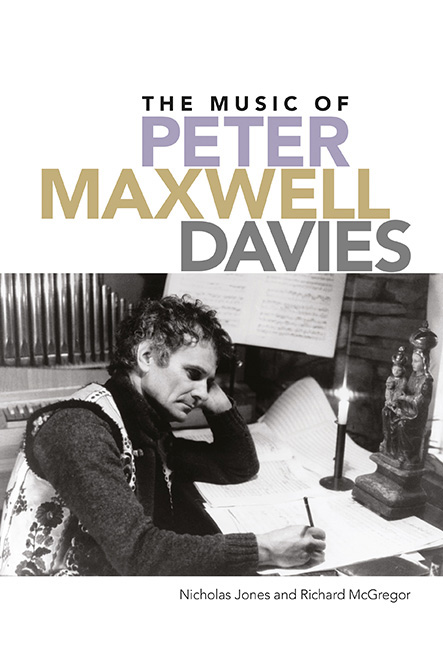Book contents
- Frontmatter
- Dedication
- Contents
- List of Illustrations
- Acknowledgements
- Prelude
- 1 Biography, Stylistic Development, Autobiography
- 2 Compositional Technique and Process
- 3 Genre
- 4 Form and Architecture
- 5 Tonality and Texture
- 6 Allusion, Quotation, Musical Critique
- 7 Landscape and Place
- Postlude
- Catalogue of Works
- Select Bibliography
- Index of Works by Peter Maxwell Davies
- General Index
5 - Tonality and Texture
Published online by Cambridge University Press: 27 March 2020
- Frontmatter
- Dedication
- Contents
- List of Illustrations
- Acknowledgements
- Prelude
- 1 Biography, Stylistic Development, Autobiography
- 2 Compositional Technique and Process
- 3 Genre
- 4 Form and Architecture
- 5 Tonality and Texture
- 6 Allusion, Quotation, Musical Critique
- 7 Landscape and Place
- Postlude
- Catalogue of Works
- Select Bibliography
- Index of Works by Peter Maxwell Davies
- General Index
Summary
It has sometimes been assumed that these works [Five Pieces for Piano (1955–6) and Prolation (1958)] are atonal – I have never thought of any of my music as other than modal or tonal. This may involve operating high in the spectrum of the harmonic series and the ‘fundamental’ of a chord may be implied, deep below the surface, rather than present in physical fact.
As with every aspect of Davies's musical personality, his relationship with the notion of ‘tonality’ is neither simple nor isolatable from other aspects of his work. In particular the notion of ‘a tonality’ cannot be divorced from the structuring of the musical argument which unfolds in each work, always depending on the imperatives which inform the specific composition, nor can it be divorced from the way in which Davies exploits the interplay of textural climaxes and contrasts that contribute to the gestural nature of his music. This is a gloss on an idea articulated by Kenneth Gloag and will be discussed in the final part of this chapter. Discussion of structuring relating to formal archetypes has been specifically explored in Chapter 4. This chapter, on the other hand, considers tonality and texture operating, as it were, at the local level within the large-scale structure, but affecting the whole in different ways.
Gesture in Davies's music needs to be interpreted in a broad and eclectic way, reflecting the nature of the generating musical material and the intended effect. In Davies's hands a gesture can be a sign or signal, epitomised by the opening three pitches of his Op. 1 Sonata for Trumpet and Piano (1955), but it could also be a tonal signifier, as when the trumpet has repeated C octave p crescendo to ff in bars 4–6 of the same work (Example 5.1). The first gesture (x) is a statement of the basic building block of the movement and the trichord is immediately taken up and developed in the piano, while the second gesture (y) can be interpreted as a harmonic stabiliser, more exactly, a pedal note, repeated in bars 10–12 of the piano right hand and again in bars 17–19 of the piano left hand.
- Type
- Chapter
- Information
- The Music of Peter Maxwell Davies , pp. 179 - 207Publisher: Boydell & BrewerPrint publication year: 2020



